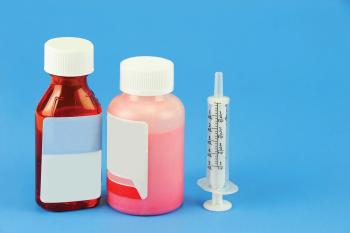
Pharmaceutical Technology Europe
- Pharmaceutical Technology Europe-01-01-2010
- Volume 22
- Issue 1
The future of drug delivery
Pharmaceutical Technology Europe discusses some of the innovations in drug delivery that could shape the future of the pharma market.
Shrinking global capital markets, new healthcare policies, ageing populations, the growth of emerging economies, technological advances and the advent of regenerative and biological medicines are just some of the factors expected to shape the future drug delivery device market, according to a report from consultancy firm Cambridge Consultants (UK).1
The report, which was based on the findings of a panel of industry experts from the UK and US, highlighted a growing market potential for the integration of electronic functionality into systemic drug delivery devices, constituting a key growth opportunity for innovative firms. The severe shortage in investment capital, however, is having a significant impact on R&D, particularly for many small- and medium-sized companies, which is expected to hamper entrepreneurship and the introduction of advanced technologies.
Image source: Cambridge Consultants
Notwithstanding this, the overall reduction in R&D spend across the pharmaceutical industry and the increasing threat of generic competition is causing traditional pharma to look towards novel innovations to boost the appeal of marketed therapeutics. This change in dynamics across the entire industry has revitalized the drug delivery market and, as such, this sector is set to make a significant contribution to innovation and growth in the global pharmaceutical market. The market will soon become highly competitive and lucrative, so those companies that recognize the importance of drug delivery device innovation today are sure to reap the rewards in the near future.
Pharmaceutical Technology Europe (PTE) spoke with Andrew Diston, Head of Global Medical Technology Practice at Cambridge Consultants, to find out more.
Andrew Diston
How has the drug delivery device sector altered in recent years?
The loss of revenue from patentprotected drugs has given rise to a large market for generic drugs. Pharma companies are now looking to devices as a means of differentiating themselves.
Has the current economic crisis affected the sector?
The lack of capital has affected the growth rate of innovative startup companies; some have fallen by the wayside whereas others are getting swallowed up by Big Pharma companies. There is still a good deal of opportunities available for innovative products.
What are the primary factors that will drive the drug delivery device market during the next decade?
First, pharma companies need to demonstrate the economic benefit of new drugs and new devices; linking improved clinical outcomes to better and easier to use devices through improved compliance will be key. Second, the continued rise of generic drugs will require product differentiation and 'consumerism', and new market channels will develop for generic drugs through major retailers. GlaxoSmithKline, for example, has taken advantage of this opportunity, having formed a partnership with WalMart in 2009 to provide a $9 private label brand of a Ventolin inhaler. Finally, biologics need special injection systems, which are inherently either difficult to use or expensive to develop. Electronics offer potential solutions to this challenge.
Are there any gaps in the market that are not being exploited to their full potential?
There is always plenty of activity in the white space. Regulators need to be open to bringing new technology in from other industries, and see that the consumer benefit outweighs the risk of slow, conservative decisionmaking. We will see pseudomedical devices in personal health lead the way in making the regulator confident that electronics and wireless connectivity is safe for use in drug delivery devices.
What challenges and opportunities do emerging markets present to manufacturers of drug delivery devices?
Emerging markets present the same opportunities for delivery device manufacturers, as they do for all other businesses. Drug delivery devices are expensive and the emerging countries do not spend as heavily as established markets. They are large and growing markets, however, so they are important and represent manufacturers with key growth opportunities. IP protection, product authentication and cGMP manufacturing are all issues that companies in the emerging markets need to understand.
There has been much talk about the development of needleless devices for injectable drugs. What are the challenges presented by such devices?
There are technical challenges associated with needleless devices, which are well documented. The energy needed to deliver drug without a needle is substantial and requires large springs or highstored energy. It is also not necessarily true that needle-free means painfree, and so these devices are more beneficial for eliminating the hassle of needles (e.g., vaccination) rather than for needlephobic patients. Furthermore, skin is a highly variable medium; whereas a needle can be guaranteed to reach its delivery point, the same cannot be said of a highspeed stream of liquid.
What growth opportunities exist in the inhalable drug delivery market?
The market remembers Exubera (inhaled insulin) and is affected by it — not necessarily for the right reasons. Developers are keen to exploit the lung as a way of delivering many therapies; however, usability, efficacy and safety remain obvious issues. Devices need to offer something other than simply being needle-free; they must be convenient to use.
There is growing concern about the environment. Are there any differences between European and the US attitudes towards this issue?
There is a small, but noticeable, difference between the Europeans and the Americans — the former being more cognisant of the market's need for environmentally friendly products. This may lead to the development of more devices that have durable and disposable content, but ease of use/safety considerations often challenge this paradigm. In particular, legislation for device recycling and collection will have a negative impact on the inclusion of electronics within disposable devices. The debate will continue and the environmental legislation (in Europe at least) will influence the devices developed.
What are the key differences between the European and US markets for drug delivery?
The market is global and as such there is not a huge difference between the ways that market leaders approach the market. Differences that are notable, however, include the US market being more receptive to using advanced technology (e.g., electronics) in drug delivery devices, such as transdermal, inhalation and injection devices. Electronic Medical Records are also more advanced in the US and companies are looking at devices that will better interact with modern data management systems.
Do you think drug delivery devices will become simpler or will they incorporate more advanced and complicated technologies?
They will become simpler to use as a result of the application of more advanced and complicated technologies.
Reference
1. 2020: a new drug delivery landscape (Cambridge Consultants, Cambridge, London, UK, September 2009).
Articles in this issue
about 16 years ago
Optimizing inhaler mouthpiece designabout 16 years ago
Handbook of Excipients, 6th Edition: a book reviewabout 16 years ago
Newsabout 16 years ago
A new generation of transdermal deliveryabout 16 years ago
Why animal studies cannot suitably assess nanomedicinesabout 16 years ago
The winning formula for a generics businessabout 16 years ago
Medicated chewing gumabout 16 years ago
Can you predict 2010about 16 years ago
eCTD now mandatory for the Centralized Procedureabout 16 years ago
The year aheadNewsletter
Get the essential updates shaping the future of pharma manufacturing and compliance—subscribe today to Pharmaceutical Technology and never miss a breakthrough.




